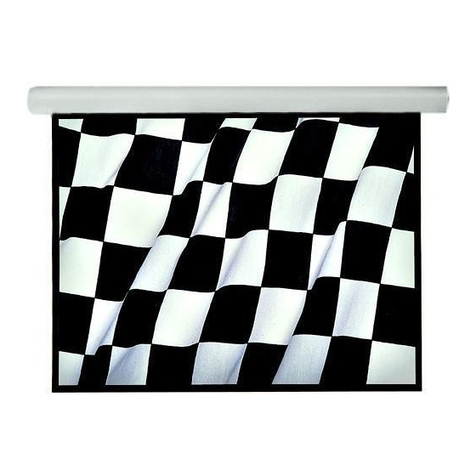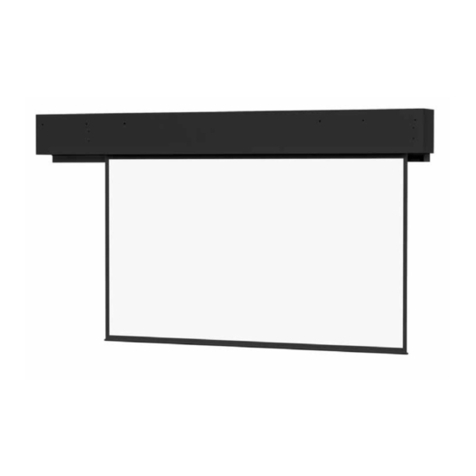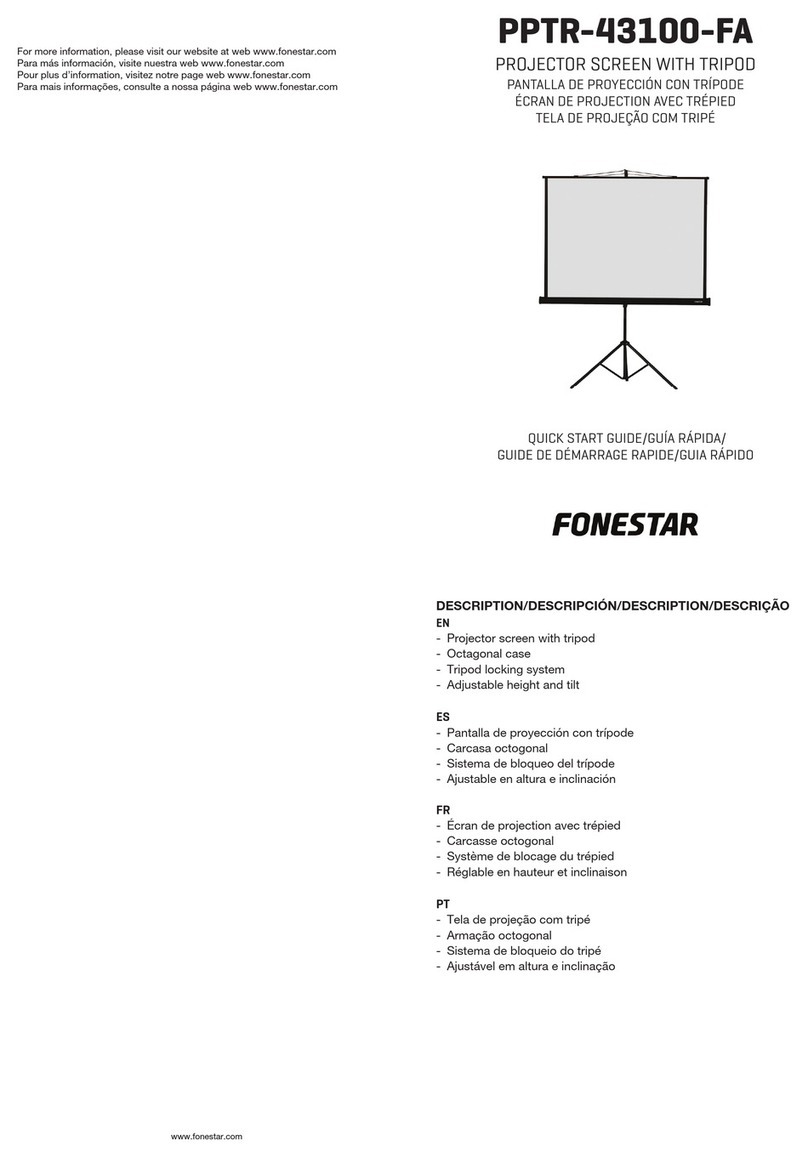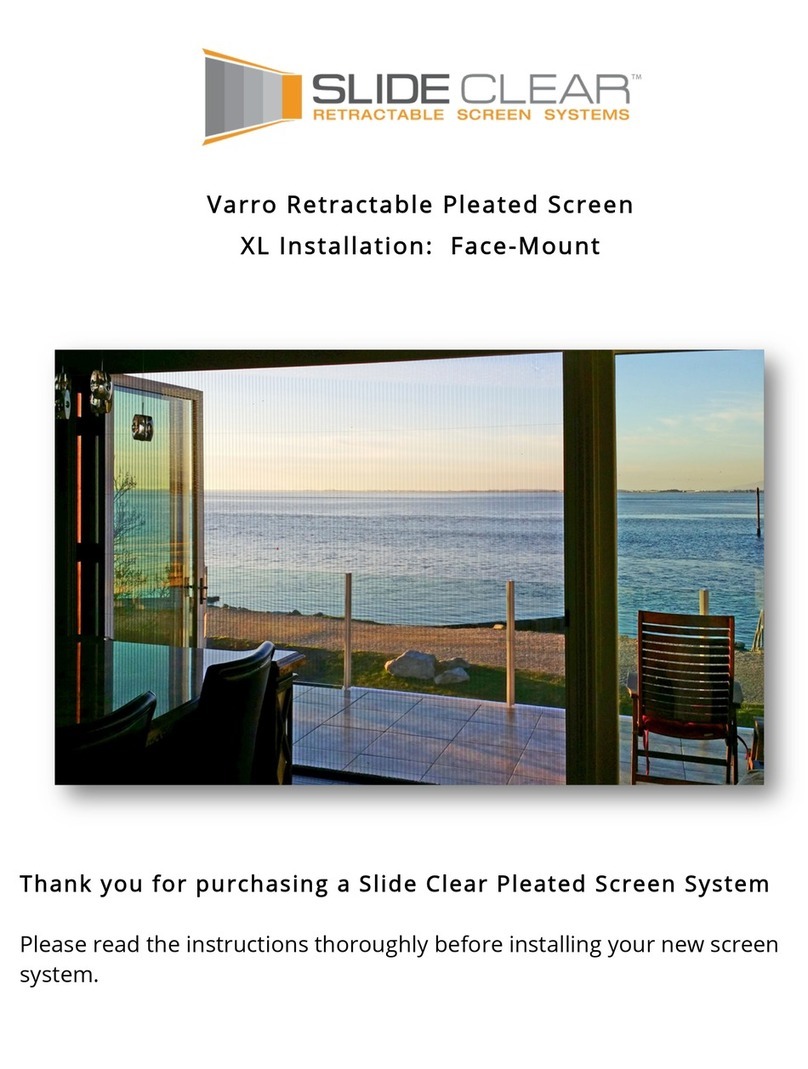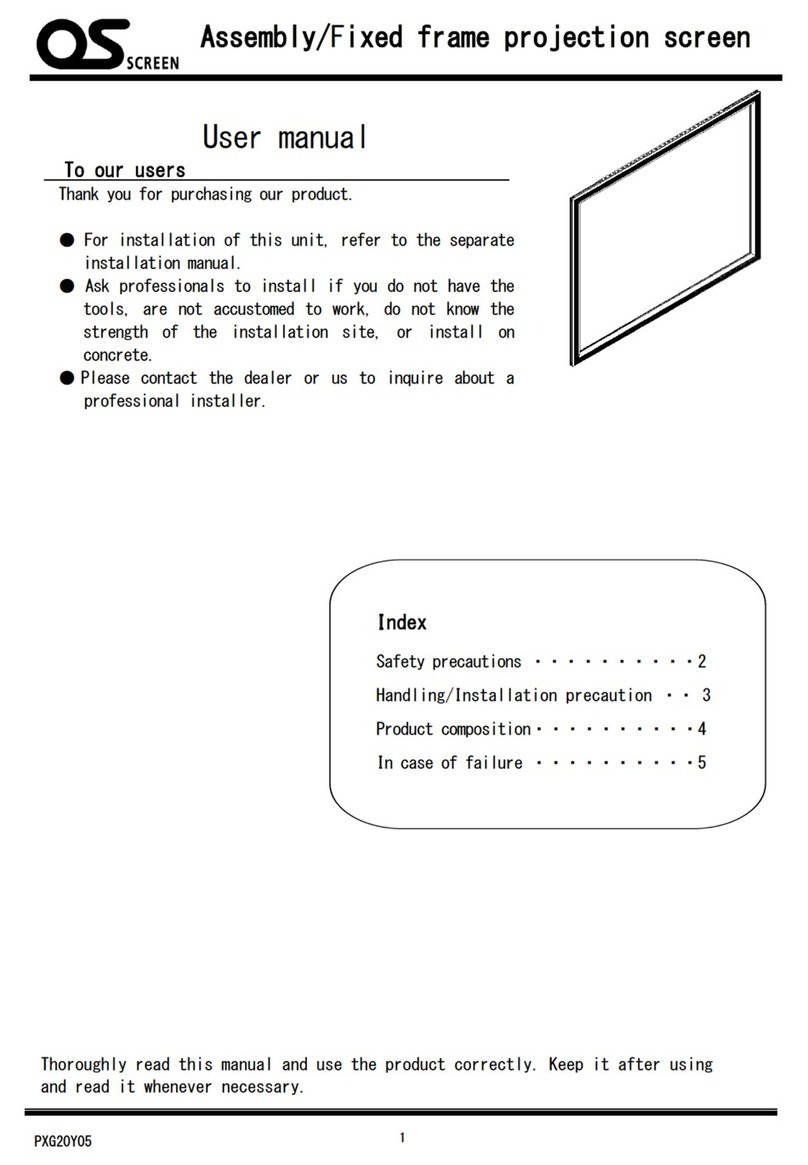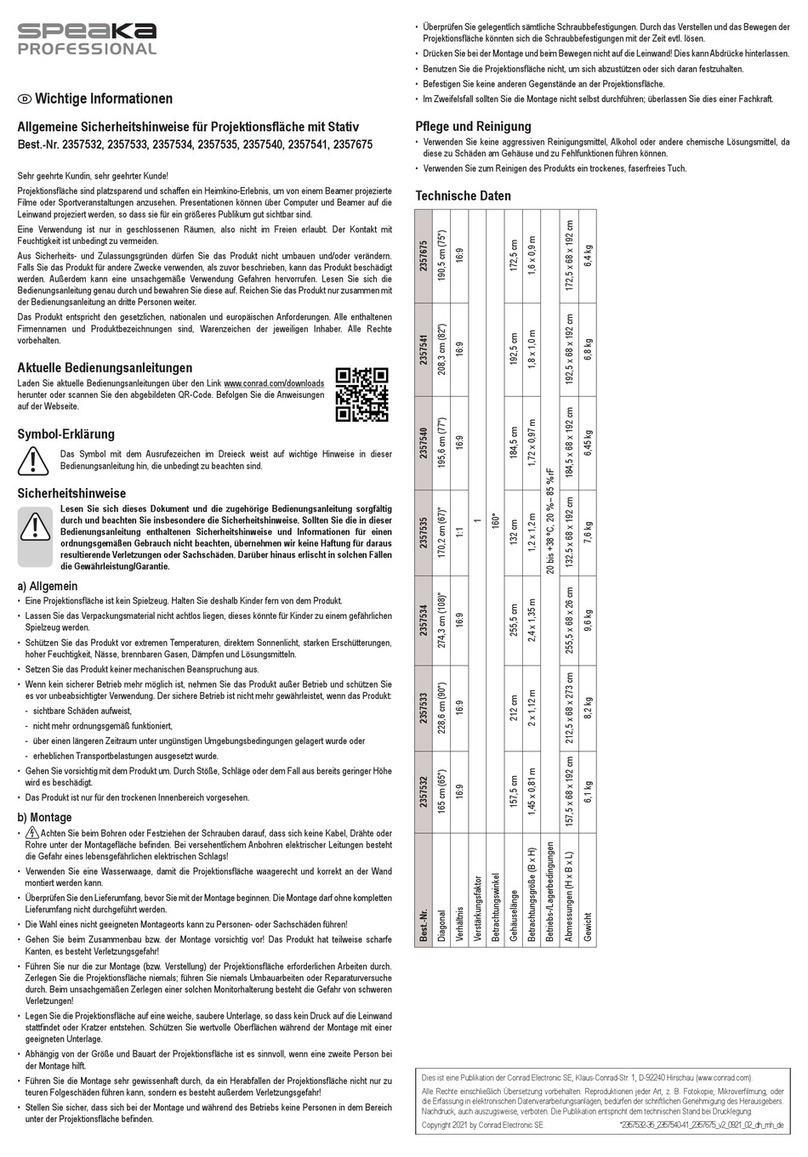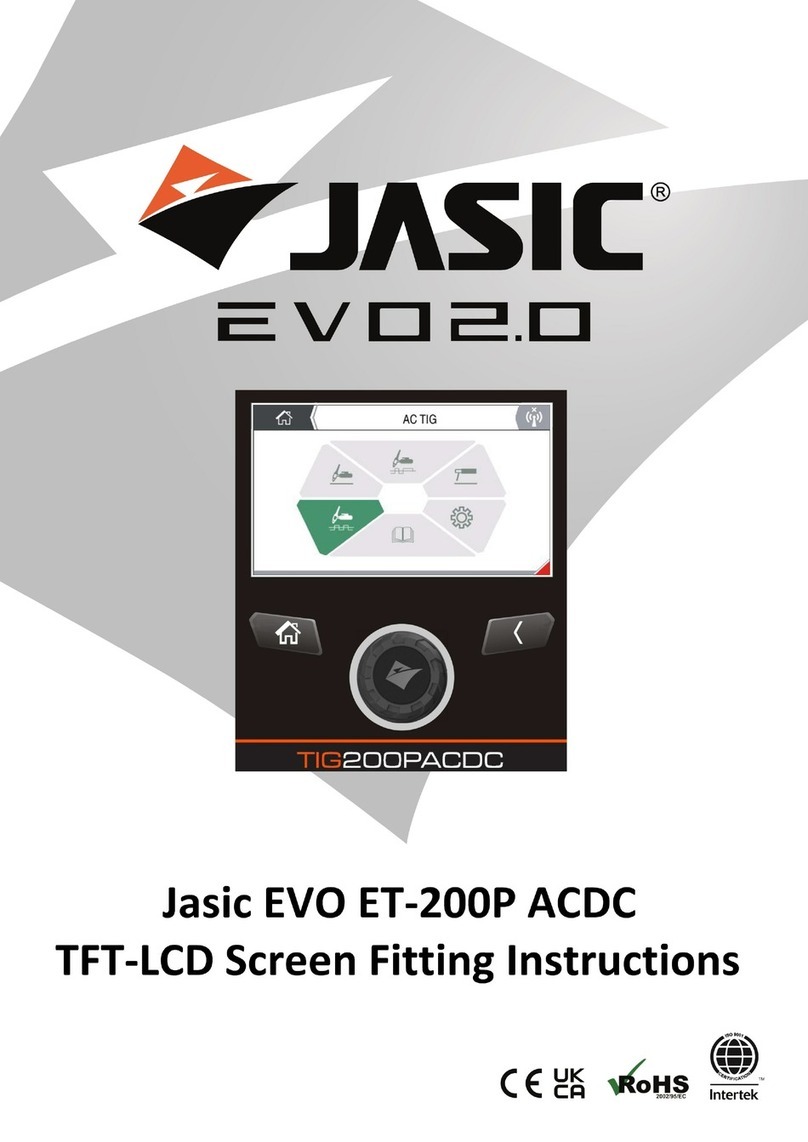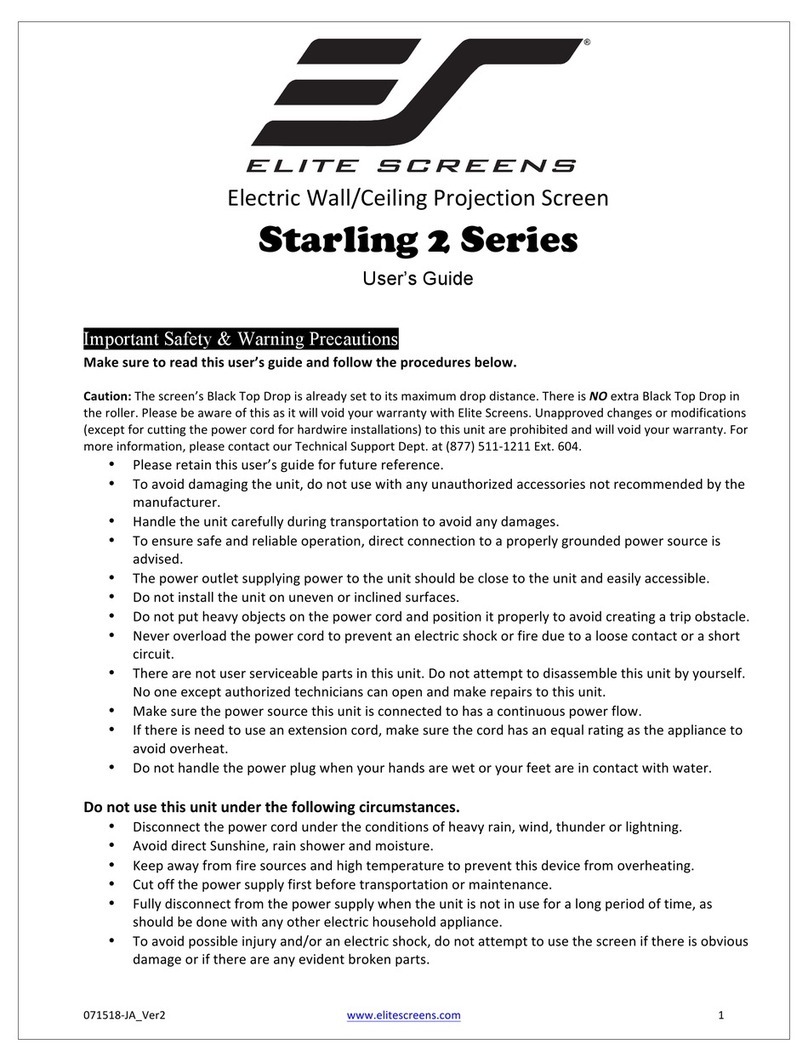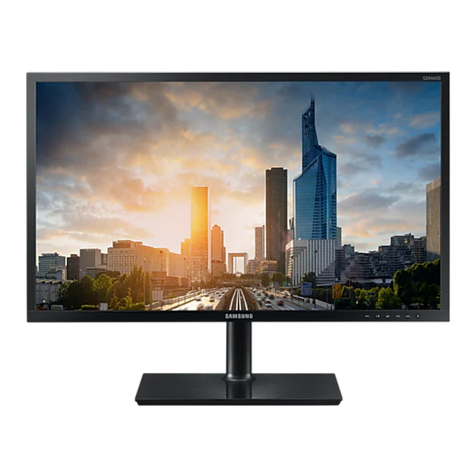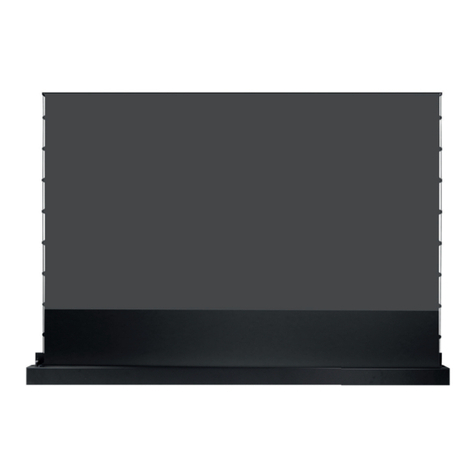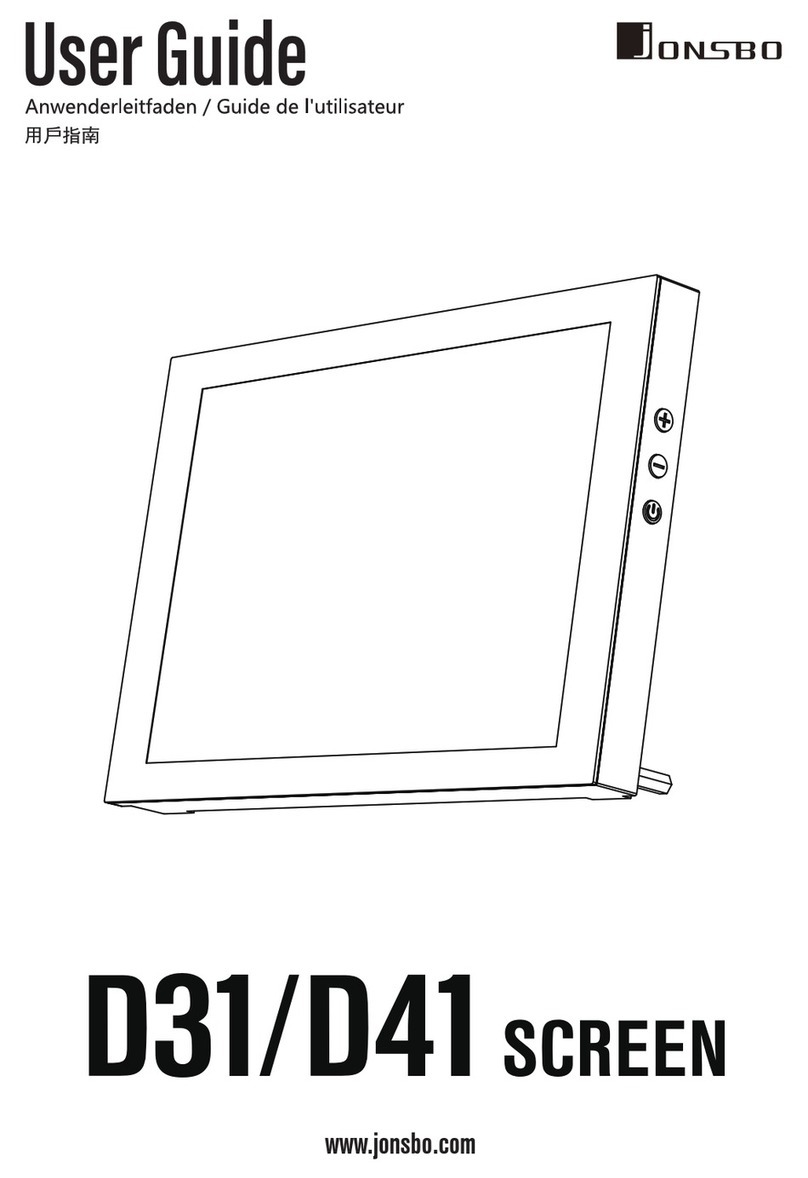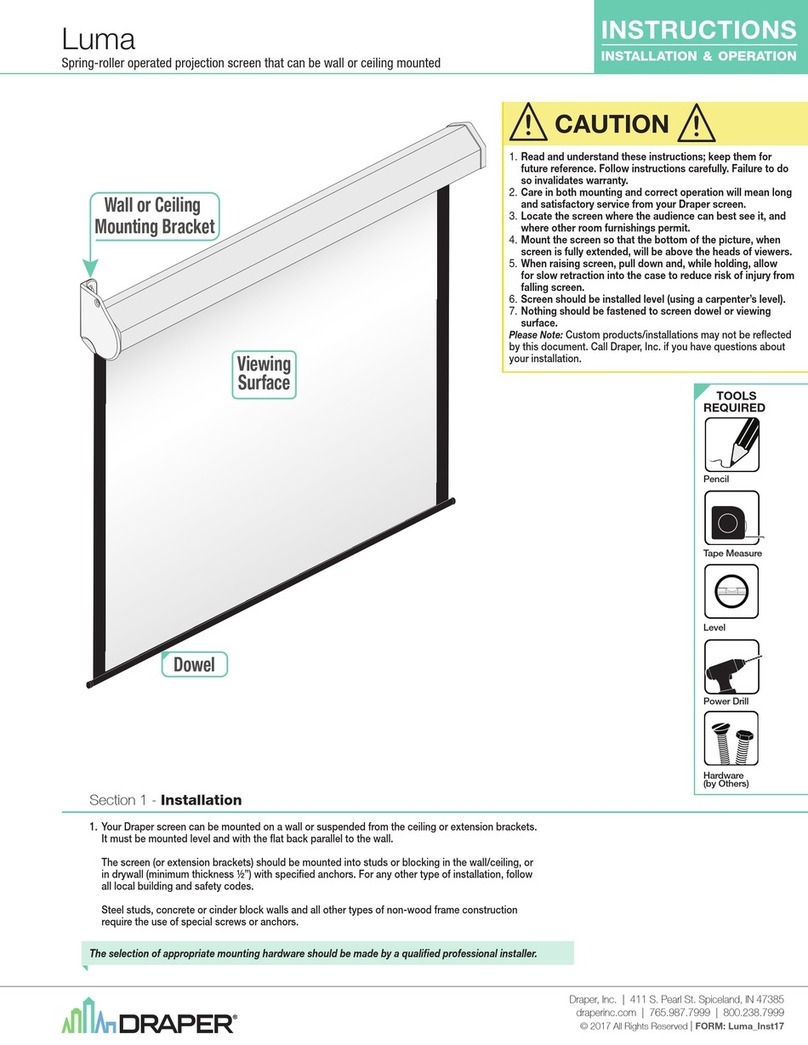
11
Mount to the Wall
Slide the Hanging Brackets until they line up with
the secured mounting hardware. With an assistant, lift the
screen gently onto the secured Wall Mounting Screws so that
the keyholes on the Hanging Brackets fit over the screws.
18
INSTALLATION MANUAL
www.qualgear.com | 2 Year Limited Warranty | Version: December 2015
16 Top Hanging Brackets:
on the wall, measure
and mark 3/4" down
from the top edge of the
desired frame location.
IMPORTANT make sure
they are marked on the
center of the studs and
verify they are level.
Bottom Hanging
Brackets: measure and
record the distance from
the top of the bracket to
the top of the matching
bottom bracket on the
assembled frame. Mark
this distance on the wall
from the top marked
location.
approx. 3/4"
Record
Distance
17
Locate the Wooden Studs
This step applies to wooden stud wall installation only. Determine and mark the exact
locations of two stud centers on the wall. Wooden studs should be spaced so that the
weight of the screen is distributed evenly. In order to achieve this, mark the studs that
are separated by at least one-third to one-half of the projector screen’s total width.
15
For example: if the projector screen is 100" wide, look for two studs that are spaced
between 33" to 50" apart. Stud spacing 48" apart would be ideal in this case.
1/4"
IMPORTANT Verify that each Hanging Bracket is properly secured before releasing
the projector screen to avoid injuries and property damages.
Mark the Drill Locations for the Hanging Brackets
Different wall types require
different types of hardware.
Hardware is included for wooden
stud and concrete wall mounting
only. For other wall types, please
consult a professional.
Wooden Stud Wall Mounting: using a power drill
and 3/32" drill bit, drill pilot holes of 3/32" (2.38 mm)
diameter and approx. 1.18" (30 mm) depth. Secure
each Wall Mounting Screw by using a socket
wrench, leaving about 1/4" of thread exposed.
Concrete Wall Mounting: using a power drill and a
3/8" masonry drill bit, drill mounting holes of 3/8"
(10 mm) diameter and approx 1.18" (30 mm) depth
at the marked locations. Insert Concrete Anchors
and hammer them into the wall, secure each Wall
Mounting Screw by using a socket wrench, leaving
about 1/4" of thread exposed. Socket
Wrench
Do not use power drill to
fasten the Mounting Screws.
Use the anchors provided
for concrete wall mounting only.
Do not use them for drywall.
Also, use socket wrench for Wall
Mounting Screws to prevent
damages to the screw heads.
